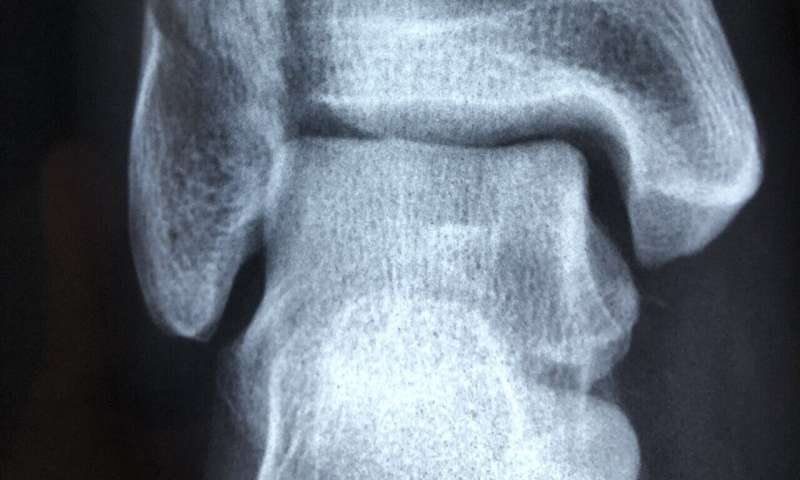This article has been reviewed according to Science X's editorial process and policies. Editors have highlighted the following attributes while ensuring the content's credibility:
fact-checked
peer-reviewed publication
proofread
Study finds link between BMI trajectories and fracture risk in late adulthood

A recent study published in Osteoporosis International sheds new light on the relationship between body mass index (BMI) trajectories during middle adulthood and the risk of bone fractures in late adulthood.
The study, titled "Association of bone fracture with 30-year body mass index (BMI) trajectories: findings from the Framingham Heart Study," provides valuable insights into the potential implications of BMI changes on fracture risk later in life.
The study analyzed data from the Framingham Original Cohort Study, involving 1,772 participants with an average follow-up of 17.1 years. BMI trajectories were constructed using latent class mixed modeling, and their association with fracture risk after age 65 was explored using Cox regression.
Key findings of the study include:
- Participants transitioning from overweight to normal weight during middle adulthood had a higher risk of all fractures after age 65 years compared to those who maintained a stable BMI.
- Similar patterns were observed for lower extremity fractures, including pelvis, hip, leg, and foot fractures.
"These findings emphasize the importance of maintaining a stable BMI throughout adulthood to reduce the risk of fractures in later life," said Douglas P. Kiel, MD, MPH, Director, Musculoskeletal Research Center and Senior Scientist, Hinda and Arthur Marcus Institute for Aging Research, Hebrew SeniorLife; and Professor of Medicine, Harvard Medical School and Beth Israel Deaconess Medical Center.
"For overweight individuals, strategies to avoid bone loss during periods of weight loss during middle adulthood could be beneficial in terms of reducing fracture risk. This is especially true with the recent increases in the use of the new obesity drugs," Dr. Kiel added.
More information: Zihao Xin et al, Association of bone fracture with 30-year body mass index (BMI) trajectories: findings from the Framingham Heart Study, Osteoporosis International (2024). DOI: 10.1007/s00198-024-07068-7



















